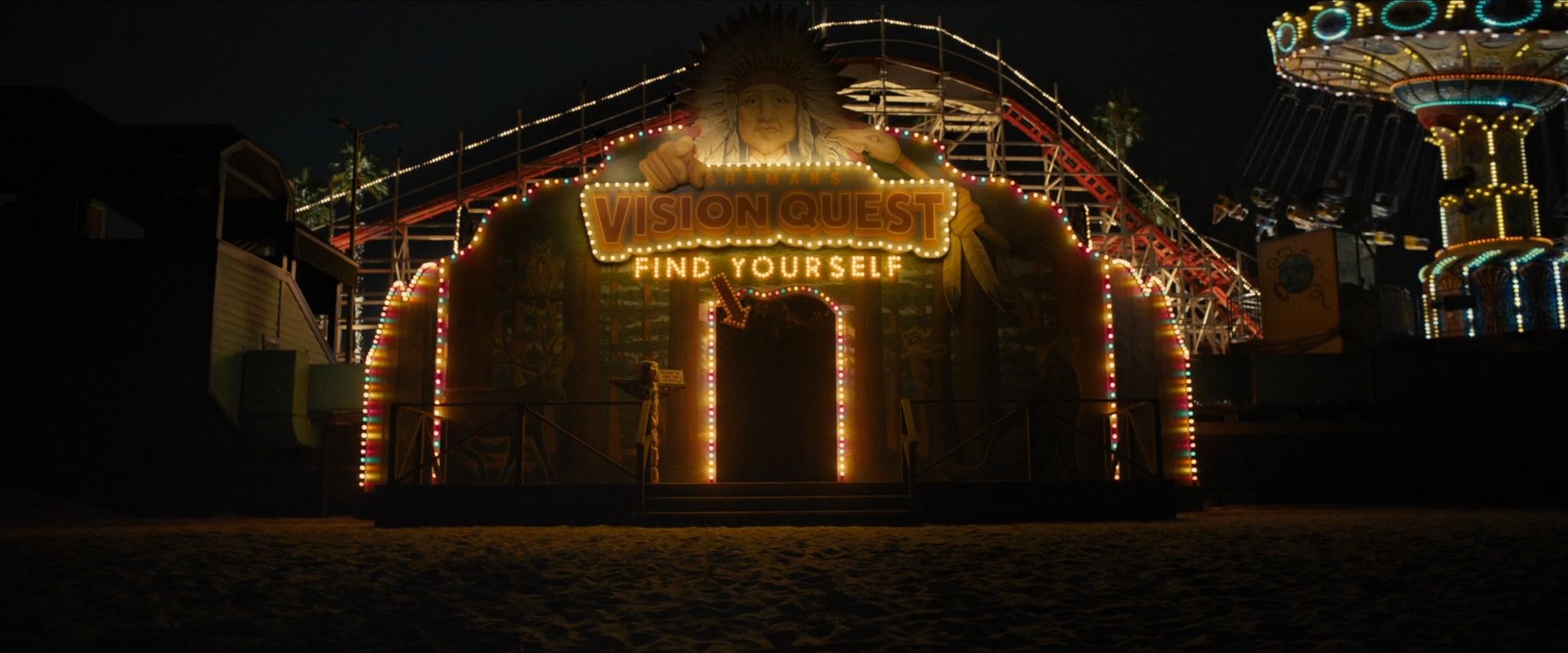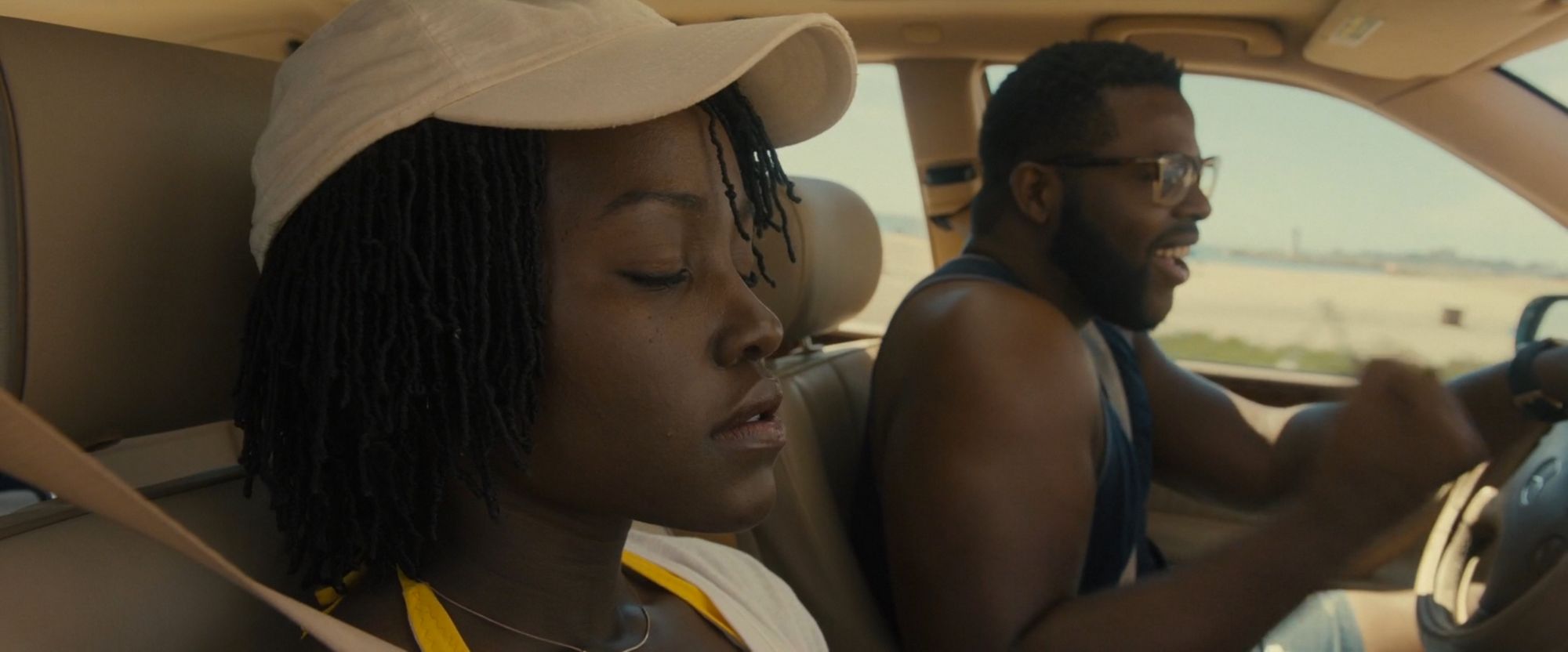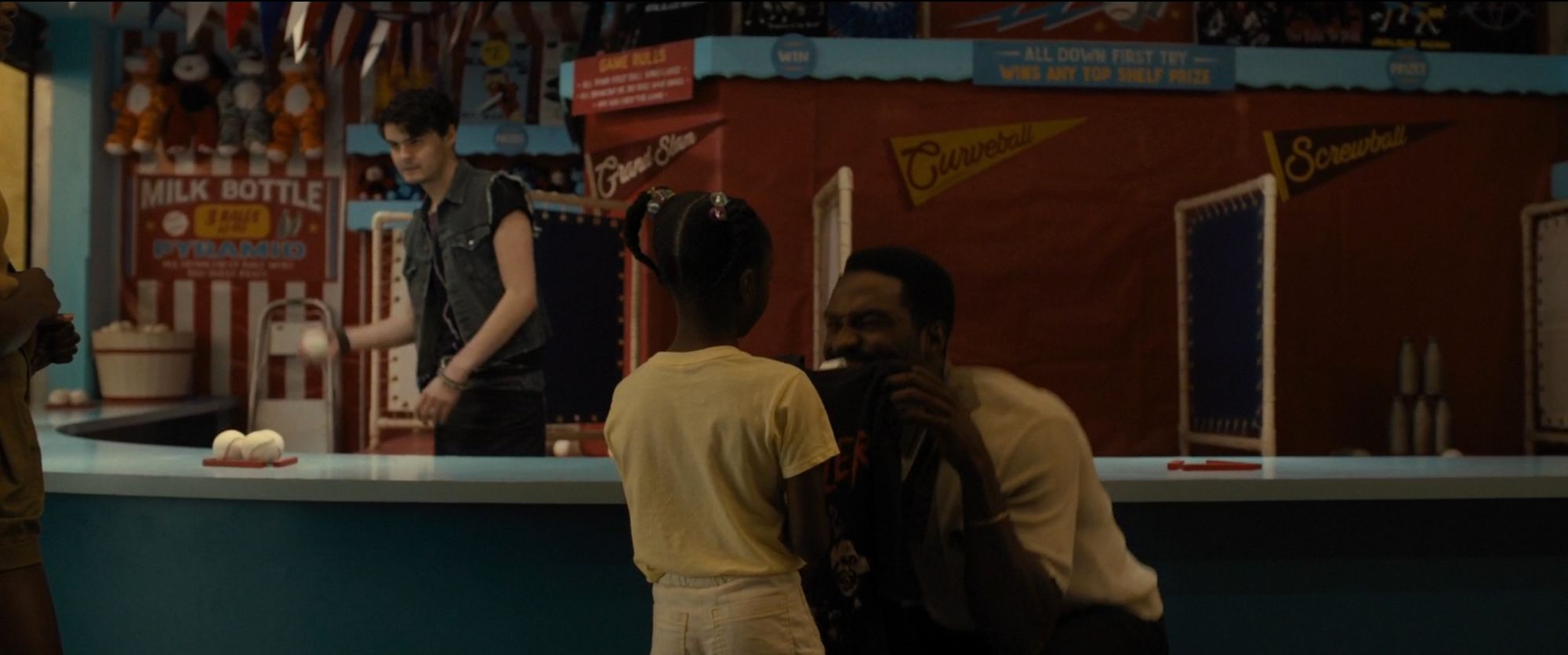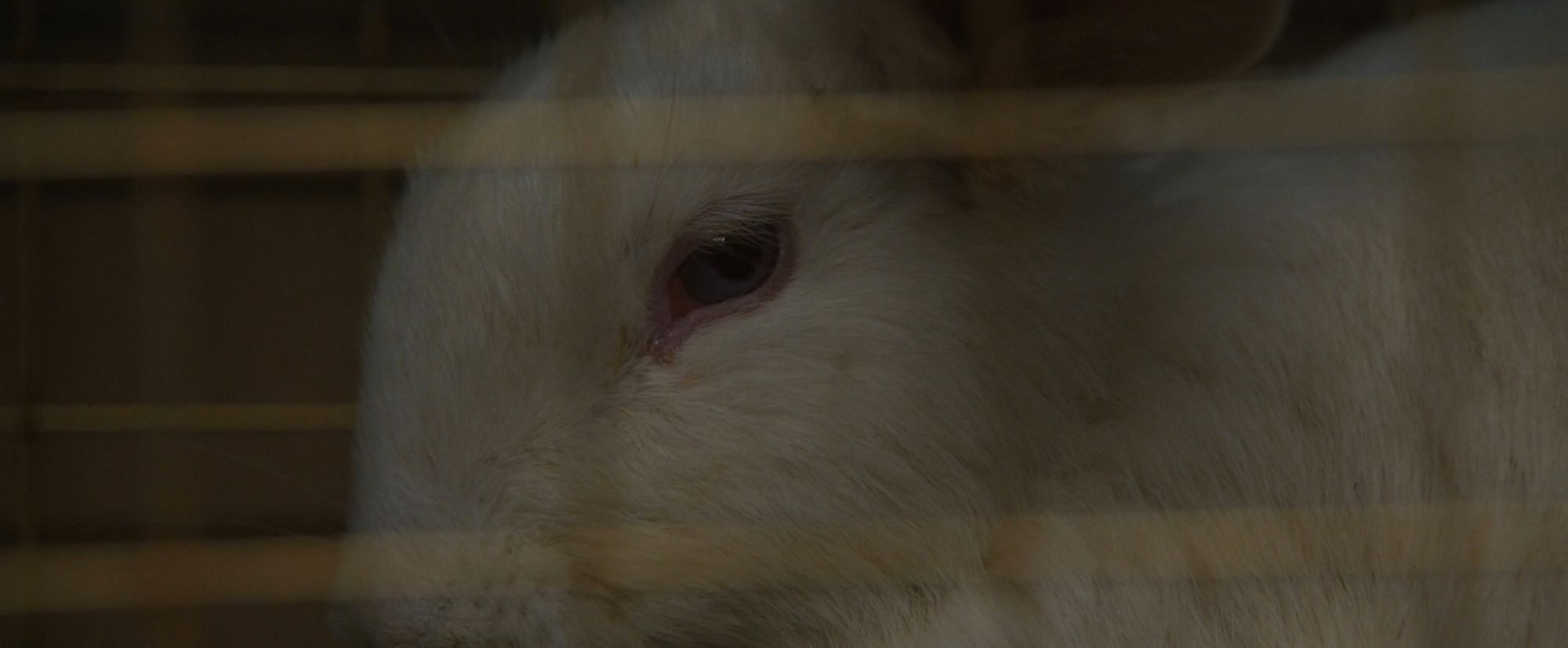Review: Us (2019)
Jordan Peele's second feature arrived with enormous expectations after the surprise success of Get Out. Though a lesser film, it does not disappoint.

First, let me say: Jordan Peele's Us (2019) is not as great a film as his feature debut, Get Out (2017). It is not quite as sturdy a piece of cinematic furniture. It does not have quite the same staying power. Neither is it as subtle, or (inevitably) as fresh in style.
What it is, however, is a funny, riveting thrill ride on the screen, and an engaging, metaphorical puzzle of social commentary to think about after viewing. There is so much happening on the subtextual level, in fact, it is practically impossible to fully decipher. But fear not — it has jumps, scares, laughs, surprises, sharp dialogue, memorable performances, and is shot with a beautiful, immersive photographic quality. Peele makes it easy to simply sit back and enjoy the ride.
Given how sparingly music is used, the soundtrack makes a big impression. The standout song is 'I Got 5 On It' by Luniz. A 1995 hip-hop hit with a soulful hook played over something of a strange, chilling beat, the song is a perfect fit for the film.
Jordan Peele spoke to Entertainment Weekly about the song selection:
I love songs that have a great feeling but also have a haunting element to them and I feel like the beat in that song has this inherent cryptic energy, almost reminiscent of the Nightmare on Elm Street soundtrack.
Normally the unusual beat of 'I Got 5 On It' would go unnoticed, sonically fading into the whole without drawing attention to itself. Played in the context of this narrative, however, it becomes suggestive of one of the film's big themes: the presence of a dark, unsettling energy lurking underneath day-to-day life and normal behaviour.

The plot follows the Wilson family – Adelaide, Gabe, and their two kids Zara and Jason – going on yearly vacation to their summer house near Santa Cruz Beach. An uneasy, mysterious tone is quickly established. The film opens with explanatory text:
There are thousands of miles of tunnels beneath the continental United States…
Abandoned subway systems, unused service routes, and deserted mine shafts…
Many have no known purpose at all.
Flashback to 1986, where Adelaide as a child visits Santa Cruz Beach with her parents. She wanders away while at the beach-side fairground into a house of mirrors, where she encounters a girl who is her mirror image, leaving her traumatised and unable to speak for some time after, and her parents at a loss to understand what happened during the fifteen minutes she was out their sight.
We cut to a shot of a rabbit in a cage, zooming out to reveal rows upon rows of rabbits stored in adjacent cages as the opening credits roll.
The central concept around which the film narrates its story is that of the shadow self. A doppelgänger-like version of a person, identical in most ways — they even share the same soul —, but gone very wrong. An evil, monstrous twin. This concept surfaces the idea of there being two radically different potentials within each person and every soul.
These shadow selves, who call themselves "the tethered," live underground in the networks of tunnels we are told about in the film's opening frames, living without sunlight in bare, grim surroundings. The shadow selves stumble around like zombies, only able to issue grunts to communicate, mimicing the actions of their above-ground counterparts like puppets with minimal agency of their own.
The fact that the tethered are a kind of mirror image of the world above, only in deprived underground surroundings, suggests they don't just represent a dark potential within every individual but also the power of surroundings, and the extent to which individuals are empowered with autonomy (the tethered have almost none), to determine the nature of the individual. They represent a message of "nurture over nature," where circumstances could turn a good person evil, and vice versa.
Adelaide, surprised by a day trip arranged by Gabe without her knowledge that takes her back to Santa Cruz Beach – the site of the traumatic encounter with her shadow self as a child –, brings this theme to the narrative forefront:
'I can't be here. It's too much. Being here it… feels like there's this black cloud hanging over me, and, uh… I don't feel like myself.'
The well-known quote from Russian novelist Aleksandr Solzhenitsyn, warning against the errors of ethical dualism (the belief in separate "good" and "bad" people, independent of circumstances), could be the unspoken mantra of the film:
If only there were evil people somewhere insidiously committing evil deeds, and it were necessary only to separate them from the rest of us and destroy them. But the line dividing good and evil cuts through the heart of every human being. And who is willing to destroy a piece of his own heart?
- Alexander Solzhenitsyn, The Gulag Archipelago
A consequence of ethical dualism is the creation of an "Us" versus "Them" mentality, forming the rational basis for many destructive and dehumanising behaviours. Peele has chosen the film's title carefully. It references the first, less obviously harmful step of this ethical dualism -- the creation of a notion of "Us" from which the dehumanising notion of "Them" inevitably follows.
The film's title also suggests two other meanings. First, on the literal narrative level when the Wilson family is abducted by their tethered counterparts, they realise with horror that "they are us!" Also brought to mind is "US", suggesting the cultural critiques of the film are pointed specifically towards the United States and problems within US society.
As well as representing the power of circumstance to realise dark potentials within an individual, the tethered also, copying the actions of their counterparts above, serve at times to illustrate ugliness beneath the surface of everyday actions. As the above-ground version of a father at the fairground crouches and shows a young Adelaide the t-shirt he has won for her, a slightly strained grin on his face, it just about passes for normal parental behaviour. But it has already been established the parent is half-drunk and disinterested, trying to amuse himself at the fairground, and paying only minimal attention to his daughter (who he subsequently lets wonder off into the house of mirrors as he plays Whac-A-Mole).

The below-ground version of the same scene, where the tethered versions of the Dad and young Adelaide mimic the same actions, albeit in a bare, starkly lit underground corridor, looks like a version of events stripped of their pretence, ugliness exposed. The Dad slowly turns to the child displaying the t-shirt with an exaggerated, creepy grin painted on his face, holding the t-shirt out. The child snatches the t-shirt as if to end the transaction as quickly as possible, and the Dad instantly drops his grin and walks off, can of beer in hand. It was simply an exchange they were compelled to engage in, their mannerisms showing a hollow and ugly transaction, lacking any attempted display of sentiment. In this way the tethered, as well as showing an ugly alternative to the world above, expose ugly behaviour in that world.

The tethered also serve as a direct political commentary. Living underground as an angry, violent parallel to the privileged above, stripped of all luxuries and given limited agency, they represent the "underclass" of society (they literally live under the privileged class). We are told they were created by the government in a failed experiment aimed at controlling the population like puppets. This narrative detail turns the allegory into a pointed political critique. The title "Us" now fits the double meaning of "US," and the allegory becomes a criticism of the United States government. The metaphor now suggests the government created the angry, embittered underclass in society who, like the tethered, are liable to rise up and overthrow them as a result of the poor conditions they have been forced to live in.
While most characters perceive the tethered as evil monsters that have come to slaughter and kill, Adelaide alone is in a position to understand the last part of Solzhenitsyn's quote: "who is willing to destroy a piece of his own heart?" She struggles emotionally with the death of the tethered when they are the counterparts to her or her family, as if she understands their deep connection to the same soul, and the circumstantial nature of their violent behaviour.
The more you look into the metaphor, the deeper we fall down the rabbit hole. And yes, the idea of these concepts being a rabbit hole is visually signified by those rabbits shown as the credits roll. The caged rabbits are in fact underground, serving as livestock which the tethered must eat, "raw and bloody," to survive. The underground network of tunnels full of angry shadow selves is, literally, a rabbit hole.

What Peele is particularly adept at, while constructing these vast and ambitious metaphorical frameworks, is delivering them through the vehicle of a fun horror/comedy film that can be enjoyed as well-made and entertaining cinema, without getting caught up in or distracted by the narrative subtext.
The first half of the film plays out like an ironic, comedic family film with witty dialogue and funny jokes, shot beautifully, but with an uneasy, disharmonious undertone that doesn't quite let the viewer relax. The second half of the film plays out like an extended horror/action sequence from a zombie apocalypse film, peppered with comedic relief, scares, thrills, and surprises. You can watch the film purely on the surface level, feel your skin crawl as you see the recognition of the Wilson family at meeting their shadow selves, and laugh at the inability of Gabe to compute that the creepy, murderous doppelgängers who have invaded his family home and taken them hostage are not going to be appeased by offering them the second-hand motor boat with a barely-running engine he can't even impress his above-ground family with.
This is what, perhaps more than anything, sets Jordan Peele apart from his contemporaries. Like Get Out (2017), the film functions beautifully on two very different levels. Watch it in the cinema and have your hair knocked back — laugh, jump in fright, feel your arm hairs stand on end, and have fun; then go home and find yourself puzzling over the metaphorical layers for days and weeks after (and there is so much I haven't touched on here). Very few filmmakers are able to deliver that combination.
James Lanternman writes movie reviews, essays, and moonlit thoughts. You can reach him at [email protected].
Previously… Notes From the Playoffs
